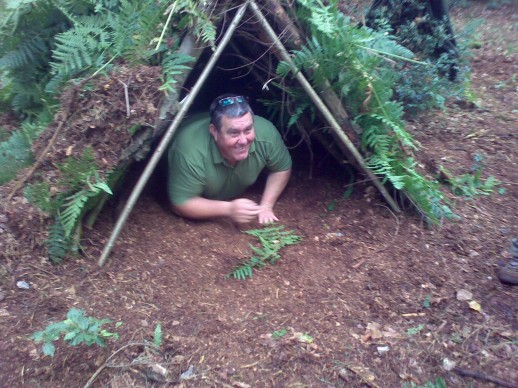Andy Noble and his co instructor Paul from Natures Craft put on a great bushcraft day for SWOG members. Held at Lords Wood in Hampshire, the day was a nice mix of practical skills and the sharing of knowlege and ideas.
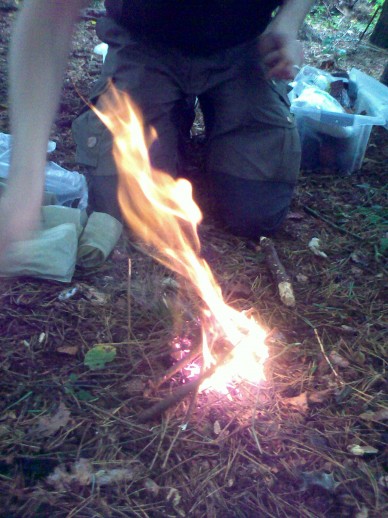
We learnt firestarting skills, using a special ‘firestick’ and steel. This works much the same as a flint in a lighter, giving off a hot spark, which, if landed on a suitable piece of tinder can ignite and start your fire. Varioius tinders were tried including the bark from western red cedar, birch, bullrush as well as more common household items which can easily be carried into the wilderness like cotton wool.
Creating shelter for survival is one of the most fundemental skills of bushcraft. We were shown how to creat a snug shelter which when covered in bracken, leaves or other natural materials will provide a rudimentary if not luxurious shelter.
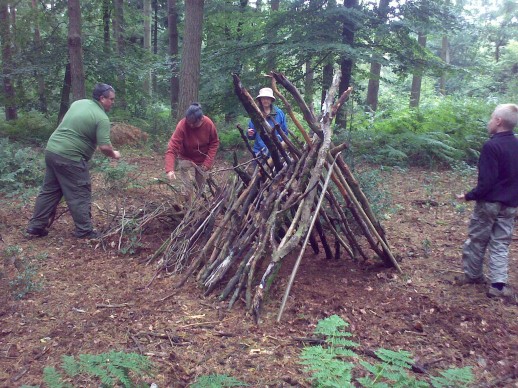
This was a freestanding ‘A’ frame type, once the insulation is on the idea is that it acts like a natural ‘duvet’, trapping warm air within the shelter.
Another method is to make a ‘lean to’ arrangement. These don’t trap heat so well, but it is possible to light a full length fire next to it and make a reflector out of logs to keep you snug all night!
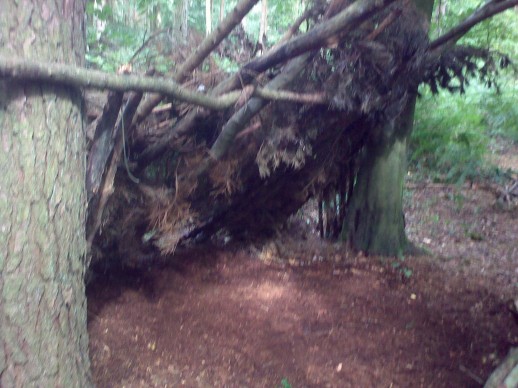
With fire and shelter sorted, food was our next concern! This time of year there is plenty of potential sources if you know where to look. Wood sorrel, blackberries, crab apples and as the weather has been so damp recently, fungi. This is a field where you really do need to know what you are doing.
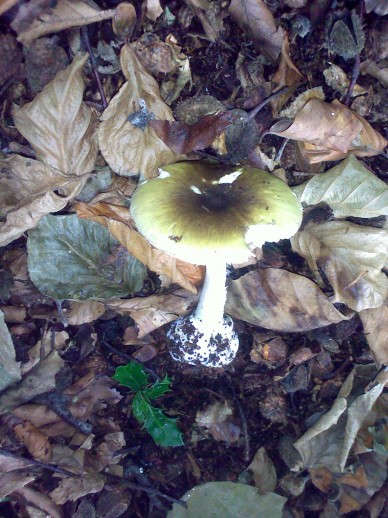
Although many fungi are edible, there are many which aren’t and some are deadly poisonous, like the Death Cap for instance.
This shaggy parasol (below) is apparently quite tasty, however be warned, not everyone reacts the same way to eating fungi. Once you are 100% certain you have identified an edible variety, the rule is to try it out in very small quantities, you may just be someone who is more sensitive to it than others and just because a book tells you it is edible, don’t rule out an alergic reaction.
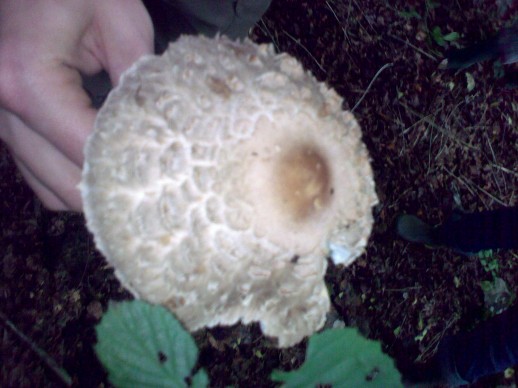
We wound up the day (forgive the pun!) with a look at cordage and how to make them with natural materials such as nettle, bramble and deer sinew. Individual threads can be twisted into strands to make a tough cord, this would have been a very important and time consuming task to perform before the days of seemingly unlimited amounts of nylon cords and ropes.
Andy has a wide cross section of other skills and showed us some of the craft work he has produced ranging from bowl and spoon carving to birch bark containers and flint tipped arrows.
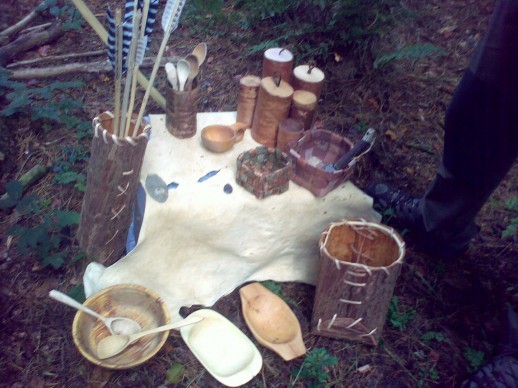
In all a very enjoyable and worthwhile day. You can find out more about Natures Craft and the courses they run from the Natures Craft website.
